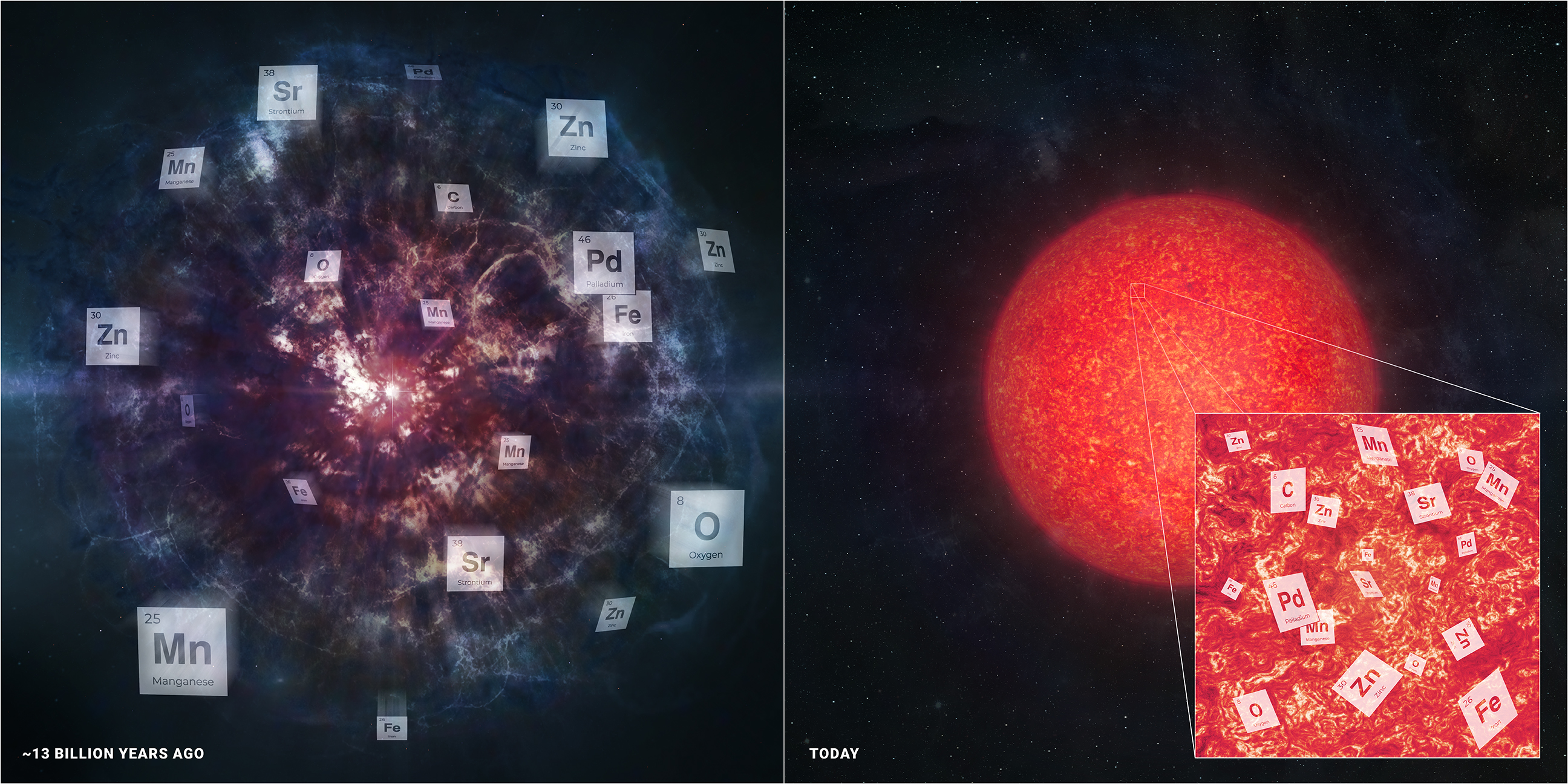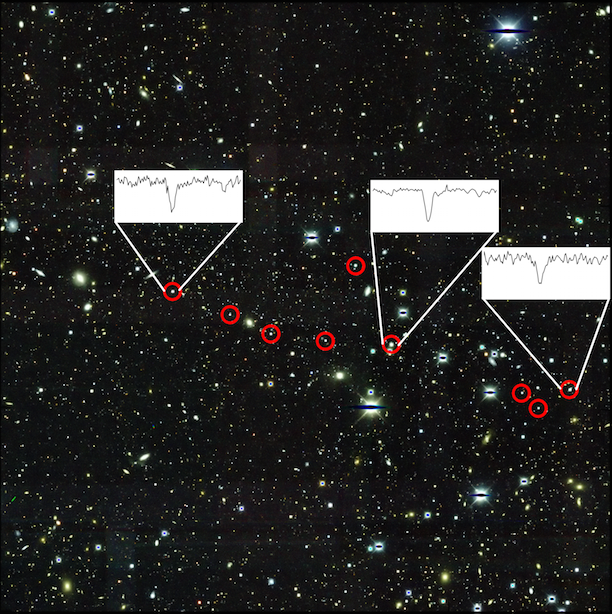Outreach/News
Spectacular Nucleosynthesis in Early Massive Stars
We recently published a discovery of a star with spectacular chemical composition, discovered in SDSS-V. It implies an explosion of an ancient star so massive that it should not have exploded, but we are at the limits of our theoretical supernova models. The paper is in press at ApJL (arXiv) and you can see my AAS press conference on YouTube. A collection of articles from UChicago, SDSS-V, Astrobites, Starts with a Bang, Calfornia Academy of Sciences, ScienceAlert, Science Reader, Phys.org, and others.
 |
|---|
| Illustration of stellar archaeology, showing elements measured in the star J0931+0038. |
| Left: Illustration of supernova explosion with elements flying out from the center. |
| Right: Red giant star with pullout showing elements measured. |
| Image Credit: University of Chicago/SDSS-V/Melissa Weiss |
Popular Science Programs
I have been a scientific advisor for a few popular science videos.
Twelve for Dinner
The S5 collaboration published the first 6D map of twelve distant stellar streams (paperhttps://ui.adsabs.harvard.edu/abs/2021arXiv211006950L) that will help reveal the dark matter distribution in the Milky Way. Press from UToronto, see details at our website.
An extended halo around an ancient dwarf galaxy
Anirudh Chiti led a paper detecting the very outskirts of the dwarf galaxy Tucana II. This is the furthest out that stars have been detected around a tiny galaxy. The paper is published in Nature Astronomy. A collection of press from Carnegie, MIT, The Guardian, CNN, Sky and Telescope.
A primitive stellar stream
The S5 survey has discovered the most metal-poor known globular cluster in the Milky Way. It is being actively tidally shredded by the Milky Way. A collection of news articles from Carnegie, VICE, Sydney Morning Herald, Sky and Telescope, Chicago Tribune (in Spanish), and CNET. The Galactic Times produced a podcast about the Phoenix stream.
A hyperfast runaway star
The S5 survey serendipitously found the first known star to be kicked out from our galaxy’s central black hole. Here are a collection of news articles from Carnegie, the New York Times, CBS News, and Space Australia.
The First Stars, Like, Ever
In 2020 I gave an online talk at Astronomy on Tap with Dr. Brittany Kamai. You can watch it on YouTube!
Glimpses of the Cosmic Dawn
In 2019 I gave a talk at the Huntington Libraries about “Glimpses of the Cosmic Dawn”, which you can watch here:
Searching for the First Stars
In 2017 I gave a talk titled “Searching for the First Stars” at the Carnegie Observatories Open House. You can watch it on YouTube!
The R-Process Galaxy Reticulum II
My favorite galaxy is Reticulum II.
News article by Carnegie Science
New in 2021! Update on the search for gold

The nine brightest stars in the r-process galaxy Reticulum II are circled.
Three of these stars are highlighted, showing their large barium content.
The Caterpillar Project
Check out The Caterpillar Project. Here’s a quick video showing what it’s about. Video production credit to Brendan Griffen.